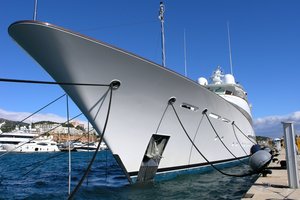There are so many factors involved with setting a secure anchor, from shelter from the forecasted weather to the nature of the seabed, weight-for-weight ratio, and knowing when it's set.
Learn essential yacht anchoring tips, including how to anchor safely, choosing the best anchorages, and maintaining an anchor watch. Discover anchor types, rode scope, and nighttime regulations to ensure secure anchoring and compliance with maritime rules for a safe yachting experience.
Let's delve into the practice of anchoring, where the unique tranquility of waking up in seclusion, tethered to the seabed, awaits exploration. We break down the essential elements that contribute to the skill of anchoring.
- How to Anchor a Yacht Properly and Safely?
- What Is Shelter in Yacht Anchoring?
- fS M BkSh: Yacht Anchoring Abbreviations
- Common Yacht Anchoring Abbreviations (Refer to Admiralty Chart 5011 for a full list)
- How Do You Choose the Right Anchor Type for Your Yacht?
- What Is Depth in Yacht Anchoring?
- Yacht Anchors: Weight for Weight
- Safety First
- Tripping Line and Buoy
- Transit and Swing in Yacht Anchoring
- Balls Up: Important Practice in Anchoring
- Lines Ashore: What Does It Mean?
- What Is an Anchor Watch and Why Is It Critical?
- Electronic Systems to Enhance Anchor Watch Effectiveness
- What Is Double Up in Yacht Anchoring?
- Compass on Pillow
- What Are the Legal Requirements for Anchoring in International Waters?
How to Anchor a Yacht Properly and Safely?
Proper yacht anchoring requires systematic approach selection, scope calculation, and setting procedures. The process begins with anchorage reconnaissance including depth sounding, bottom composition analysis, weather forecasting, and swing room calculation.
Step-by-Step Expert Protocol
Pre-Anchoring Assessment: Survey the anchorage using electronic charts, depth sounder, and visual inspection. Identify bottom composition through chart symbols or test anchoring - sand and mud provide excellent holding, while rock, coral, or weed offer poor anchor grip. Calculate swing radius using maximum rode length plus vessel length, ensuring adequate clearance from other vessels, shore, and hazards.
Anchor Selection and Deployment: Modern yacht anchoring favors high-efficiency designs like Rocna, Mantus, or Ultra anchors over traditional CQR styles. Deploy anchor in 3:1 scope initially, allowing controlled descent to prevent fouling. Optimal water depth for anchoring ranges from 8-25 feet - shallower water increases swing radius and grounding risk, while deeper anchorages require excessive rode length.
Setting and Testing Procedures: Engage reverse gear at 1500-2000 RPM for 60 seconds to set the anchor firmly. Proper setting creates visible tension in the anchor rode with minimal vessel movement. GPS track monitoring should show position stability within 20-meter radius. Test holding power by gradually increasing reverse thrust while monitoring GPS position.
Professional operations use dual anchor systems in challenging conditions - primary anchor deployed normally with secondary anchor set at 45-degree angle, providing redundancy and reduced swinging radius essential in crowded anchorages.
What Is Shelter in Yacht Anchoring?
When selecting an anchorage, it's important to check both the current weather and the forecast for your intended stay. While local charts may suggest a recommended anchorage based on prevailing winds, keep an eye on any predicted changes in wind direction. Make sure the anchorage still provides shelter if the wind shifts.
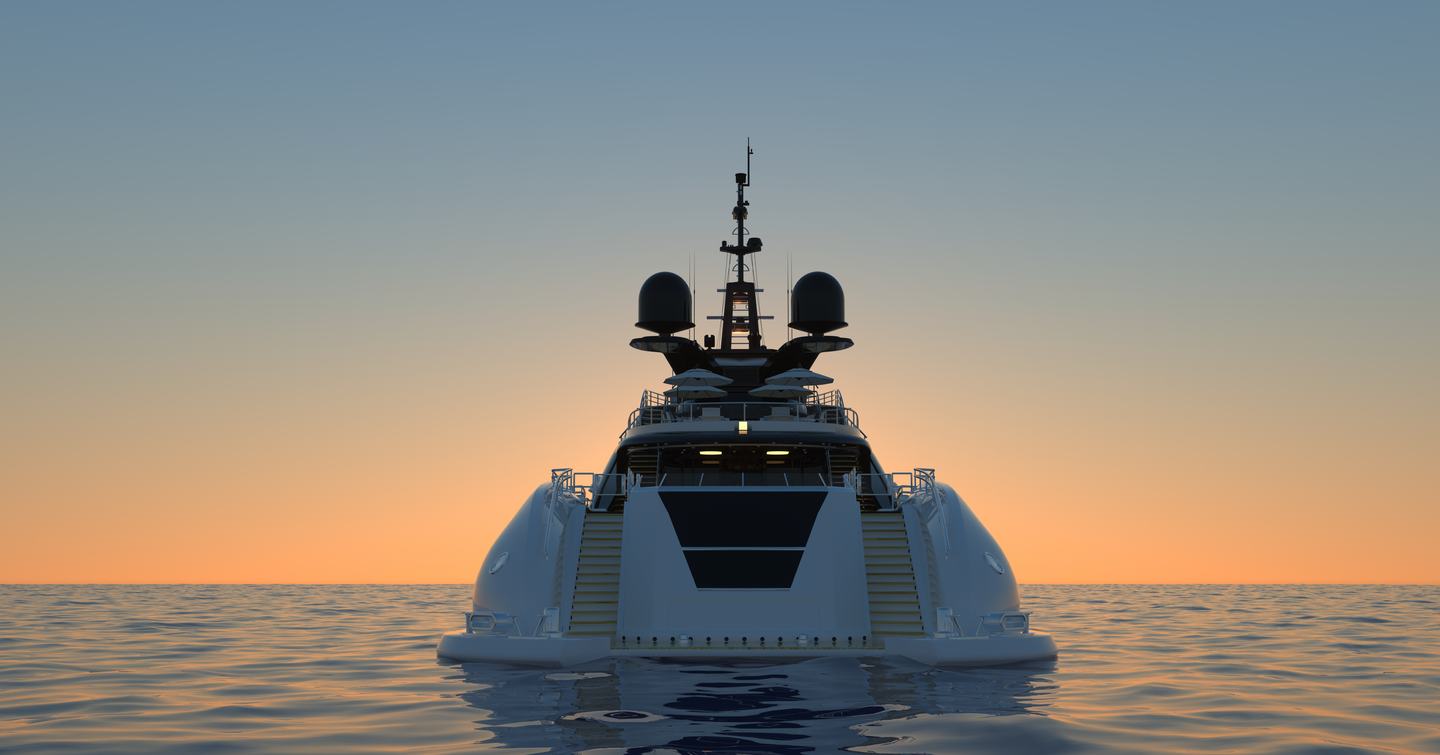
Check the water depth (chart datum) and anticipate tidal changes when anchoring.
Consider the tidal range: if you anchor during high water, ensure there will be sufficient depth when the tide recedes. Conversely, if anchoring during low water, deploy enough chain to secure the yacht when the water depth increases during high tide.
fS M BkSh: Yacht Anchoring Abbreviations
On nautical charts, abbreviations are commonly used to describe the nature of the seabed. To find a recommended anchorage, look for the quintessential anchor symbol.
The common ones are
- Mud: M
- Sand: S
- Gravel: G
- Rock: R
- Coral: C
- Shells: Sh
- Clay: Cl
- Seaweed: Wd
- Sand and Rocks: SR
- Rock and Coral: RC
- Mud and Sand: MS
Enhanced details are achieved by incorporating additional indicators, such as f, Bk or s, for example, indicating fine (fS is fine sand), soft, (sM is soft mud), and broken, (BkSh is broken shell).
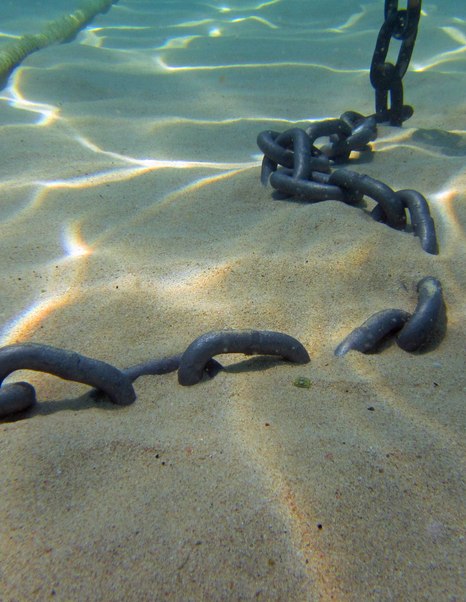
Common Yacht Anchoring Abbreviations (Refer to Admiralty Chart 5011 for a full list)
| Abbreviation | Meaning | Relevance to Yachting |
|---|---|---|
| Ank | Anchorage | Designates a general area suitable for anchoring. |
| Ank Proh | Anchoring Prohibited | Marks zones where anchoring is forbidden, often for safety or environmental reasons. |
| Berth | Berthing Area | Indicates space allocated for vessels to moor or anchor safely. |
| FA | Foul Anchorage | Warning of unsuitable seabed conditions (rocks, wrecks, cables) for anchoring. |
| Safe Ank | Safe Anchorage | Identifies anchorages with adequate depth, shelter, and holding ground. |
| CAB | Cable Area | Anchoring restricted due to presence of undersea cables. |
| OBSTR | Obstruction | Marks underwater obstacles that may prevent safe anchoring. |
| MD | Minimum Depth | Specifies the least depth available in anchorage areas, critical for yacht draft planning. |
| RC | Recommended Anchorage Circle | Depicts the safe swinging circle within which a vessel may anchor. |
How Do You Choose the Right Anchor Type for Your Yacht?
Modern anchor selection balances holding power, bottom penetration, and retrieval characteristics. High-efficiency anchors like Rocna, Mantus Ultra, and Fortress provide 3-5 times the holding power of traditional designs while offering superior setting reliability.
Anchor Performance Analysis:
All-Chain vs. Chain-Rope Combinations: All-chain rode provides maximum holding power through catenary effect and abrasion resistance but adds significant weight affecting vessel trim. Chain-rope combinations (100-200 feet of chain plus rope) offer optimal balance of performance and weight, with chain providing seabed protection and rope adding elasticity for shock absorption.
Size Selection Methodology: Anchor size should be based on windage area calculation rather than vessel length alone. High-windage vessels (flybridge motor yachts, sailing yachts with large rigs) require anchors 1-2 sizes larger than displacement-based recommendations. Conservative sizing: primary anchor should hold 4-6 times maximum expected wind load, while storm anchor should handle 8-10 times normal conditions.
Specialized Applications: Coral areas require specialized designs like Fortress aluminum anchors that reset after breaking out, while strong current areas favor heavier designs like Rocna or Mantus that dig deep and stay buried.
What Is Depth in Yacht Anchoring?
Chart Datum
Chart datum signifies the lowest predicted astronomical tide representing what is expected to be the water level's absolute minimum. It's the literal reference point on the chart, with the numbers in the blue and white sections indicating the lowest depth of water.
Feet and Meters
When looking at the depths on a chart in feet and inches, align your echo sounder to the same units. Similarly, for charts in the metric system, ensure your echo sounder is set accordingly.
Scope
Scope refers to the recommended length of chain to deploy based on the depth. If using an all-chain anchor setup, lay out four times the depth. For instance, in a depth of five meters, deploy 20 meters of chain. If your anchor line combines chain and warp, extend it to six times the depth.
Yacht Anchors: Weight for Weight
Anchors are designed to efficiently embed themselves and grip the seabed, and are evaluated based on their "holding power," representing their ability to withstand a particular weight. Depending on the anchor type and various factors, they can securely hold a boat up to 200 times its weight.
The recommended anchor weight for a yacht is often suggested to be around:
Metric: 0.453 to 0.680 kilograms of anchor weight per 0.3048 meters of yacht length
Imperial: 1 to 1.5 pounds of anchor weight per foot of yacht length
This serves as a general rule, and factors such as the type of anchor, the yacht's windage (how much it presents to the wind), and the local conditions should also be considered.
For the world's biggest yachts, the anchoring system is complex. For example, for a yacht of 100 meters in length overall (LOA), the anchor size typically ranges between 3,000 to 4,500 kg (6,600 to 9,900 lbs) depending on various factors like the yacht's design, displacement, and the conditions it will face.
The anchor is held in place by the horizontal pull of the anchor chain along the seabed. The weight and design of the anchor, combined with the tension from the chain, work together to embed the anchor into the seabed and resist the forces that could cause the boat to drift."
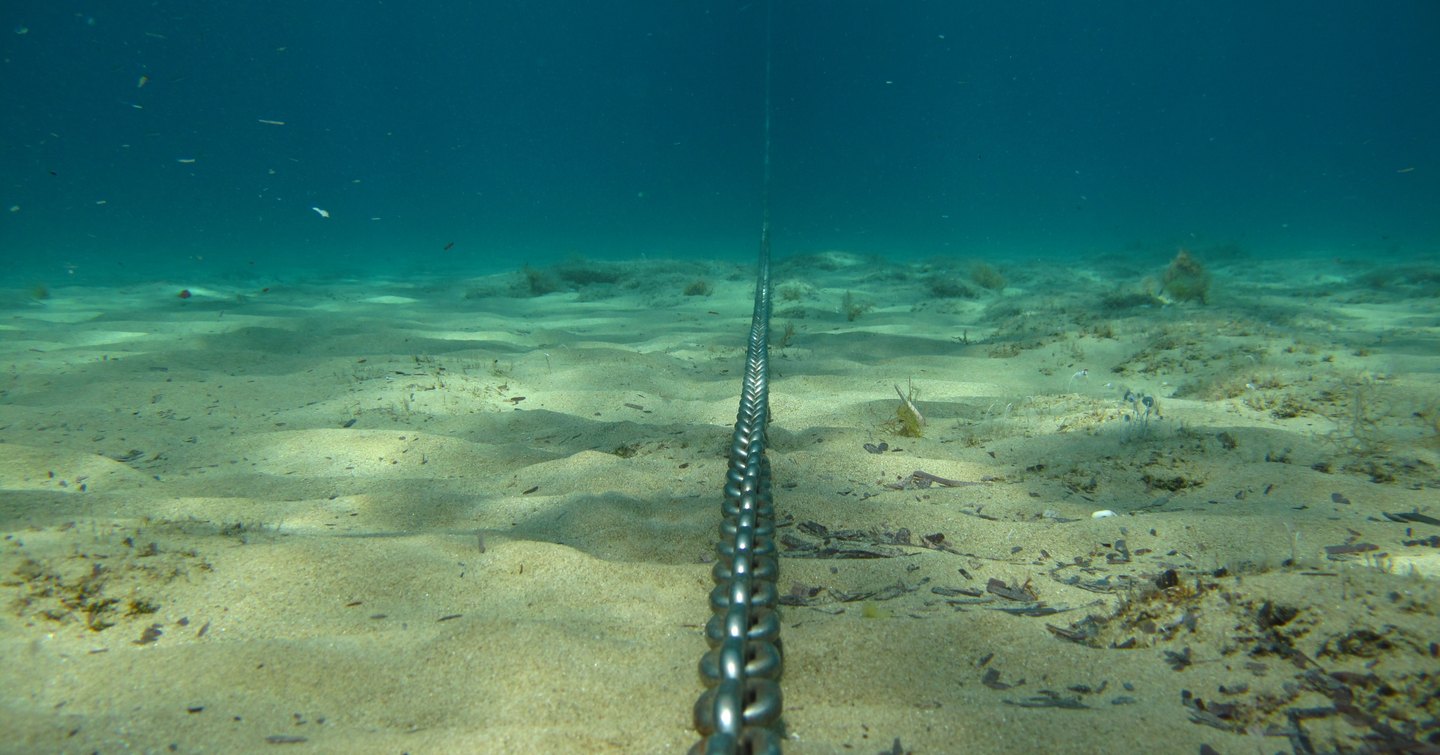
Safety First
When handling the anchor and utilizing the anchor windlass, wearing safety gloves is strongly recommended. The combination of chain, warp, a robust metal anchor, and the machinery of the windlass poses potential risks, and precautionary measures, such as wearing gloves and opting for shoes over a barefoot on-deck approach, add a layer of safety in case of a potential incident.
Having two individuals available for the deployment of the anchor is advisable, if possible.

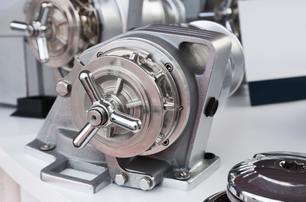
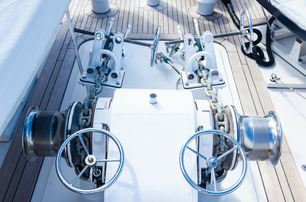
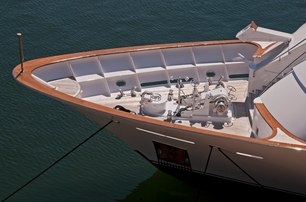
Tripping Line and Buoy
When anchoring on a rocky seabed, a tripping line will help to dislodge the anchor in case it becomes fouled or stuck. Attach a line to the crown of the anchor, lead it to the surface, and secure it to an anchor buoy.
Should the anchor snag on an underwater obstacle, pulling the tripping line can alter the angle of pull, assisting in freeing the anchor from its entanglement.

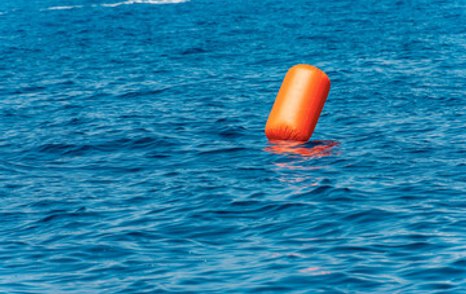
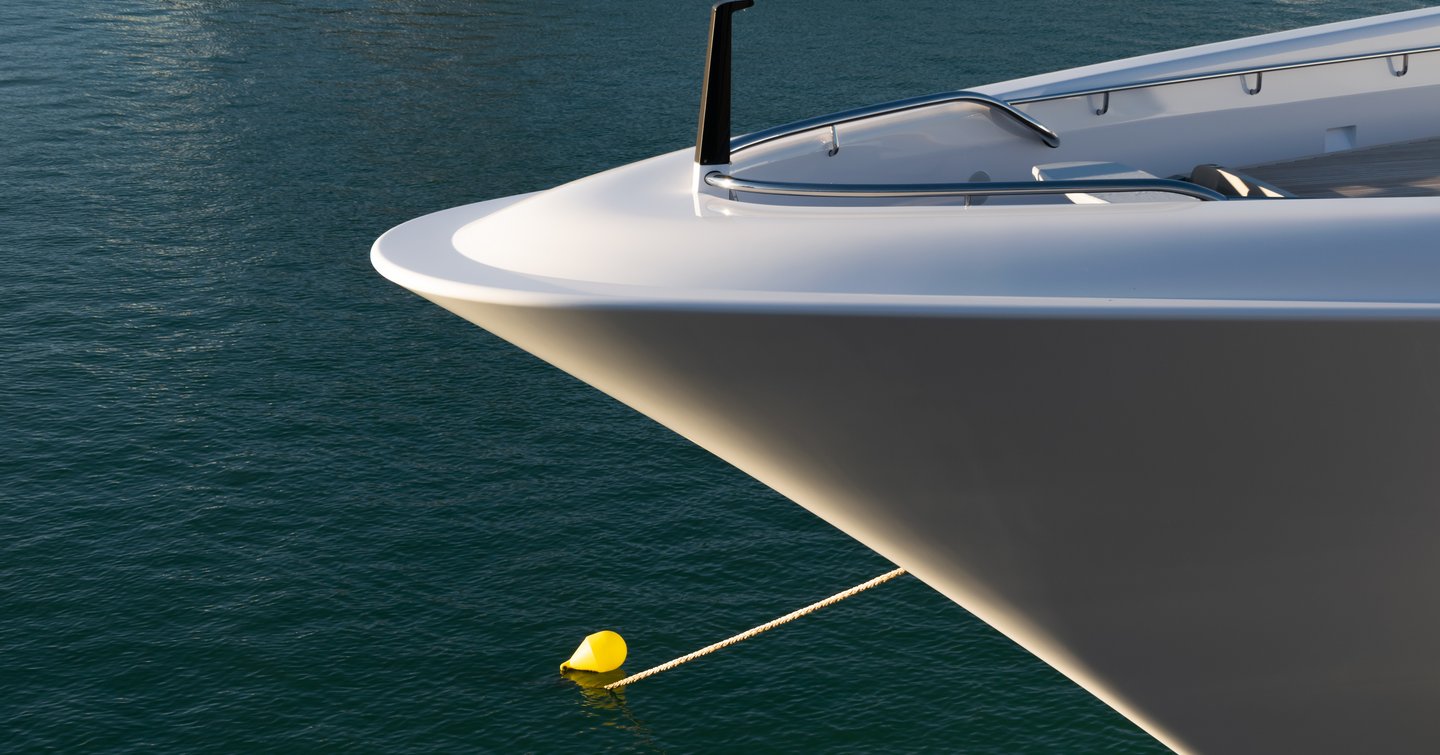
The anchor buoy enhances the visibility of the anchor location, especially in crowded anchorages or areas with poor visibility. Additionally, it serves as an indicator, marking the location of your anchor and advising other vessels to keep clear of the space between the buoy and your bow.
When ready to depart, the buoy provides a clear point to retrieve the anchor, making the process more efficient.
Transit and Swing in Yacht Anchoring
When preparing to drop anchor, a thorough assessment of the anchorage's shelter, desired anchoring depth and seabed characteristics will have been concluded. You will have an anchor buoy and tripping line ready to deploy. You, or your crew, are wearing safety gloves and deck shoes. You're all set.
Position the yacht's bow into the wind, slightly forward of the desired settling position. As the command to lower the anchor is given, the windlass will play a role in smooth deployment. Ideally, the anchor chain is marked in meters, allowing the anchor person to gauge when to halt the lowering process. Engage the yacht's engines in astern, letting the vessel drift back slowly, allowing the anchor chain to lay out along the seabed, establishing the necessary horizontal pull to secure the anchor.
Once the yacht settles in the intended position, with the correct amount of chain or a combination of chain and warp deployed, it is time to verify that the anchor has firmly set into the seabed.
Assess the swing of the vessel as the anchor is set; this circular path results from its response to wind, tide, or current. Ensure that the vessel's swing avoids proximity to hazards or other vessels in the anchorage.
When anchoring, setting a transit is a navigational technique that involves identifying two fixed onshore points that align.
Identify two distinct onshore points that are fixed and aligned in a specific way when viewed from the vessel.
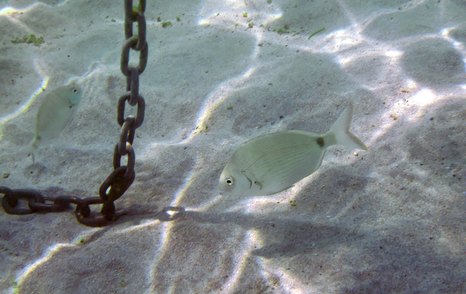
Once the anchor is set and the swing is monitored, verify that the onshore points forming the transit remain aligned. This confirms that the vessel is securely anchored and not drifting.
Balls Up: Important Practice in Anchoring
A black ball on a yacht is a day shape signal required under the International Regulations for Preventing Collisions at Sea (COLREGs). When a vessel is at anchor during daylight hours, it must display a black spherical shape in a clearly visible location — usually rigged on the foredeck or bow area.
The black ball is typically made of lightweight material, collapsible for storage, and about 0.6 meters (2 feet) in diameter. Its purpose is to signal to other vessels that the yacht is not under command and is anchored, so they must navigate accordingly.
In practical terms, imagine a yacht anchored just outside a busy marina or in a crowded bay. Without the black ball, another approaching vessel may assume the yacht is drifting or preparing to maneuver, which can cause confusion and risk of collision. By hoisting the black ball, the anchored yacht provides unambiguous, internationally recognized communication: "I am anchored — give me room."

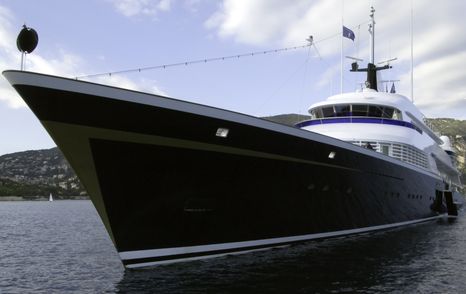

At night, when a black anchor ball will not be visible, Rule 30 stipulates vessels at anchor must exhibit an all-round white light where it can be best seen.
For yachts and vessels exceeding 50 meters in length, two all-round white lights are required — one positioned at the bow and the other at the stern. The light at the bow should be higher than that at the stern.
For yacht owners and crew, the black ball is not just a formality but a safety and compliance tool. In some jurisdictions, especially in Europe, port authorities may fine vessels that fail to display it when anchored in designated areas. More importantly, in a liability scenario (e.g., a collision while anchored), failure to show the day shape could weaken the yacht’s legal standing. Thus, deploying the black ball is a simple step that ensures both regulatory compliance and practical safety in shared waters.
Lines Ashore: What Does It Mean?
When snugly nestled into an anchorage with a depth that permits reasonable proximity to the shore, it's advisable to secure lines to fixed objects ashore.
This practice helps prevent swinging and further minimizes drift, providing an additional layer of stability and ensuring the vessel remains securely anchored in the desired position.
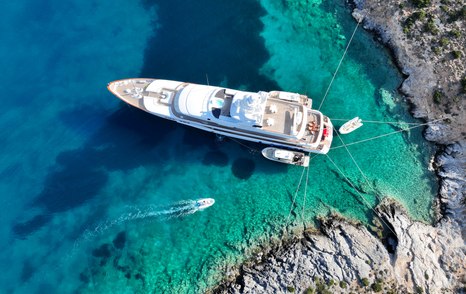
What Is an Anchor Watch and Why Is It Critical?
Anchor watch is a safety protocol involving continuous monitoring of a yacht's position to detect anchor dragging, weather changes, or approaching hazards. Modern anchor watch combines human vigilance with electronic systems including GPS track monitoring, depth alarms, and wind instruments.
Regarding transits, as mentioned above, there are several methods for ensuring the vessel's stability and safety:
GPS: Note the vessel's GPS coordinates or bearings to the selected reference point when the anchor is initially set. Many GPS navigation systems offer anchor alarm features. You input the safe radius, and the system alerts you if the vessel moves outside this predefined area.
Radar: Set up the radar to monitor the surroundings. Some radars have features that allow you to define a guard zone, and if any object, including the vessel, moves into or out of this zone, an alarm is triggered.
Watchkeeping: yachts over a certain length adhere to safety guidelines that include maintaining a watch at all times. Crew work in a watch pattern and will visually monitor the yacht on anchor, and refer to the alarms set as mentioned above.
Effective anchor watch operates on multiple monitoring levels.
- Primary systems track GPS position with alarms set at 50-100 meters from anchor position, accounting for normal swinging radius.
- Secondary monitoring includes depth changes (indicating dragging into deeper water), wind speed increases beyond anchor system limits, and visual observation of reference points ashore.
- Professional captains establish watch rotations ensuring 24/7 coverage, with bridge watch keepers trained to identify early dragging indicators before GPS alarms trigger.
Statistics from marine insurance claims show that 78% of anchor-related incidents occur between midnight and 6 AM when reduced visibility and crew fatigue create dangerous conditions. Modern integrated systems combine AIS target tracking, weather routing, and automated anchor position logging to provide comprehensive situational awareness.
Electronic Systems to Enhance Anchor Watch Effectiveness
Modern anchor watch combines multiple electronic systems for comprehensive position monitoring, weather awareness, and hazard detection. Integration of GPS, AIS, radar, and weather instruments provides 360-degree situational awareness.
GPS Anchor Watch Systems
Advanced chartplotters provide customizable anchor alarms with position accuracy within 3-5 meters. Smart systems account for normal swinging patterns, automatically adjusting alarm boundaries based on wind direction and tidal cycles.
AIS Target Tracking
Automatic Identification System monitors approaching commercial traffic and other AIS-equipped vessels, providing early warning of potential collision situations. Class B AIS transponders broadcast yacht position to commercial traffic, reducing collision risk.
Weather Station Integration
Onboard weather instruments provide real-time wind speed, direction, and barometric pressure data. Automated weather alarms trigger when conditions exceed anchor system limits, providing early warning for crew response.
Predictive Analytics
Sophisticated systems analyze historical anchor performance data, bottom composition, and weather patterns to predict optimal anchoring locations and scope requirements for specific vessels and conditions.
What Is Double Up in Yacht Anchoring?
Laying two anchors, a technique known as "anchoring with a double anchor," offers several benefits, particularly in challenging conditions. Proper deployment and coordination are essential for effective anchoring. The angle between the two should be around 45 degrees. An angle too large reduces each anchor's holding power.

Increased Holding Power:
Using two anchors can significantly enhance holding power, especially in areas with strong currents or unpredictable winds. This reduces the risk of dragging the anchor.
Stability:
Dual anchors provide added stability, minimizing the swinging or yawing of the vessel. This is particularly advantageous in crowded anchorages or tight spaces.
Redundancy:
If one anchor were to fail or dislodge, the second anchor provides a backup, ensuring the boat remains securely anchored.
Peace of Mind:
Having two anchors set can provide boaters with increased confidence and peace of mind, especially in adverse weather conditions.
Compass on Pillow
Here's a handy tip for a worry-free night on the water: Sleep with a compass on your pillow.
When you first anchor, you align the yacht's bow into the wind, completing all necessary checks for that position. However, if the wind shifts during the night, it might be necessary to ensure everything is still secure.
With a compass on your pillow, you can easily monitor any changes without leaving your bed every time you wake up with a slight yacht shift. If you find your feet still pointing north, just adjust your pillow and go back to sleep. But if the compass indicates a 90-degree shift, it's a cue to check things out.

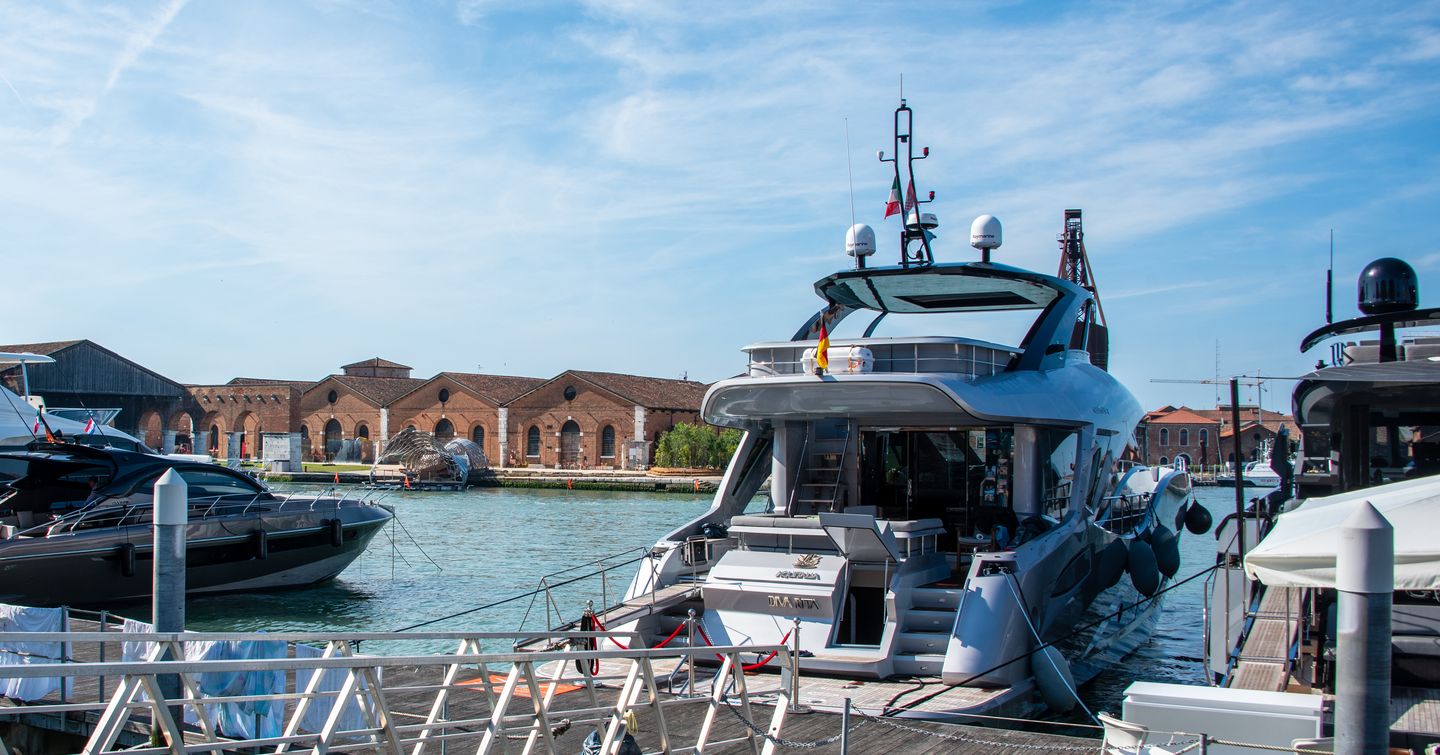
What Are the Legal Requirements for Anchoring in International Waters?
International waters anchoring follows UNCLOS (United Nations Convention on the Law of the Sea) provisions and flag state regulations. Vessels must maintain proper navigation lights, monitor VHF radio, and avoid interference with commercial shipping lanes.
Legal Framework Analysis:
Flag State Jurisdiction: Yachts remain subject to their registration country's maritime laws regardless of location. US-flagged yachts must comply with Coast Guard regulations for navigation lights, safety equipment, and watch-keeping procedures even in international waters.
COLREG Compliance: International collision regulations mandate specific anchor light configurations - single white all-around light (2nm visibility) for vessels under 50 meters, additional forward light for larger vessels. Sound signals (one short blast every 2 minutes) are required in restricted visibility.
Commercial Shipping Considerations: Anchoring in Traffic Separation Schemes or shipping lanes violates international maritime law and creates substantial liability exposure. AIS transponders help commercial traffic identify and avoid anchored yachts, while radar reflectors ensure visibility to non-AIS vessels.
From the practicality of a yacht helipad to the safety rules of anchoring signals, every detail at sea is shaped by a mix of luxury, regulation, and expertise. For yacht owners and buyers, understanding these nuances isn’t just about compliance — it’s about unlocking freedom, safety, and value on the water. Whether it’s displaying a black ball at anchor or landing a helicopter on deck, the signals and systems you choose reflect both your commitment to maritime tradition and your vision of modern yachting.
If you're considering ownership, now is the time to look beyond the lifestyle and into the details that truly define a yacht’s capability. Explore yachts for sale on Yacht Buyer and discover trusted listings, including superyachts, designed for safe, effortless anchoring.
Ready to find the perfect yacht?
Explore trusted listings on Yacht Buyer — including superyachts with certified helipads and yachts optimised for safe anchoring. Search vetted sellers, compare specs, and connect with brokers who understand aviation and maritime compliance.
Explore Yachts for Sale


